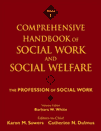Social Welfare and Economics: Redefining the Welfare State in a Global Economy
Abstract
This chapter focuses on the role of economics in social welfare policy, especially as it relates to creating a viable welfare state in a global economy. In particular, the chapter examines the historical antecedents of the modern welfare state, including FDR's New Deal and the Great Society programs. The chapter addresses how these programs reflected a shift in the role of government in modern society, a trend that would later reverse itself as the conservative paradigm came to dominate the domestic agenda and labor policy was substituted for welfare policy.
The welfare state is a vestige of the industrial era, and this chapter investigates the contrast between industrial- and post-industrial-era policies. Emphasis is placed on the three levels of the labor market—primary, secondary, and tertiary.
Income growth, mobility, the inequitable distribution of income, and the current decline in real wages among a large sector of the workforce is also examined. As part of the analysis, the authors look at the effects of the global economy on the welfare state, poverty, consumer debt, and bankruptcy. The authors look at how these problems not only affect the traditional poor but also the functionally poor (those with a median or above income but who have high debt and few assets) middle class.
Finally, the chapter proposes a new welfare agenda and outlines specific policy initiatives relevant to the changing economic landscape of post-industrial America. This new agenda should address issues like raising the federal poverty threshold; the creation of family-friendly tax policies that also reduce income inequality; new legislation that requires everyone, including corporations, to pay their fair share of taxes; stronger pro-labor laws; universal national health insurance; an increased minimum wage; and a portable federally-guaranteed nonjob-specific benefits package.



